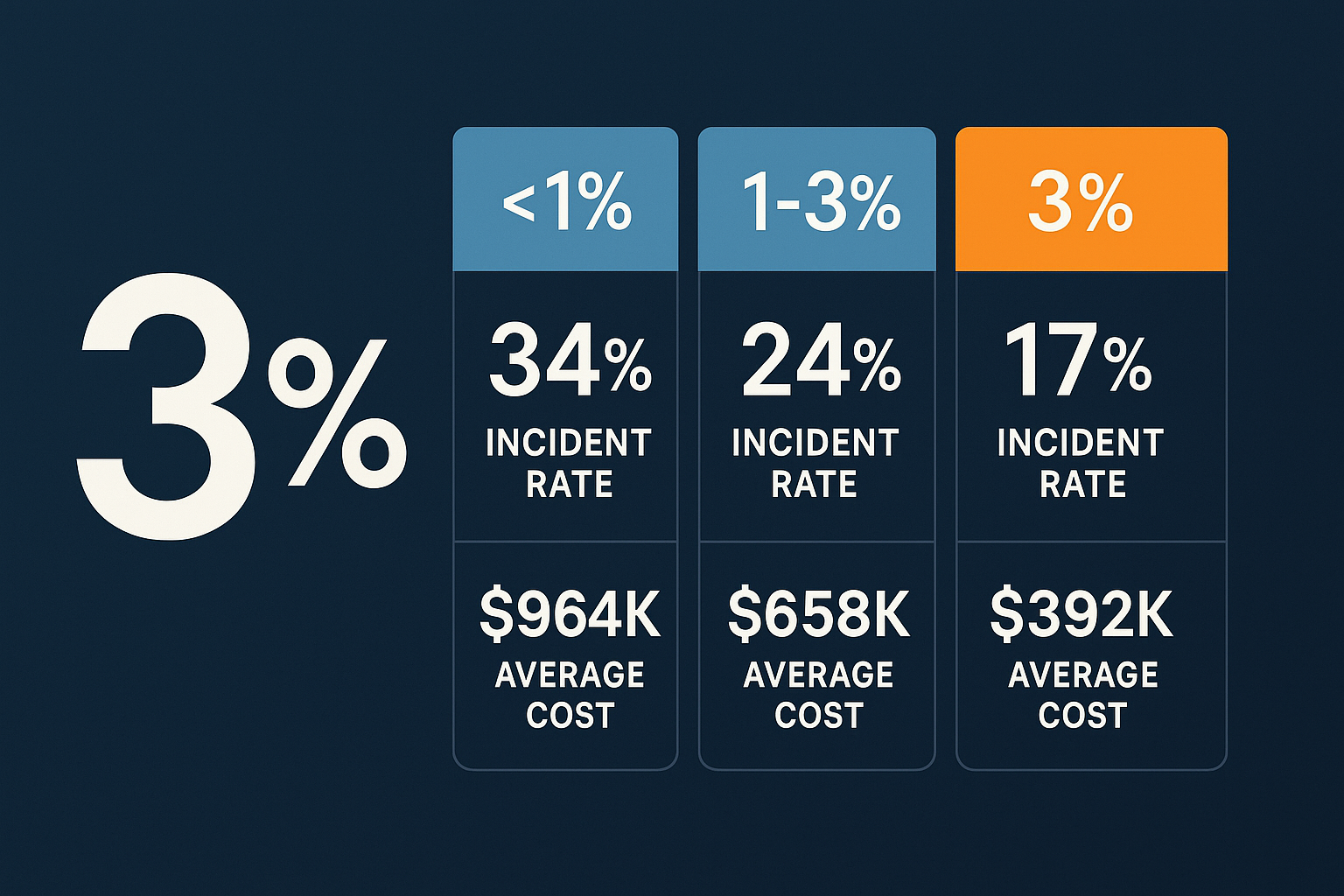 View all blogs
View all blogs
Business Continuity Crisis: Why 60% of Companies Fail the 72-Hour Test

The 2 AM Phone Call That Changes Everything
It’s 2 AM on a Friday when your phone rings. Your IT manager’s voice is tense: “We’ve been hit. Everything’s encrypted. We’re completely down.”
In the next 72 hours, your company will either demonstrate the strength of your business continuity planning or join the 60% of businesses that never fully recover from a major cyber incident.
This scenario isn’t hypothetical. I’ve received this call 147 times in the past three years. The difference between companies that survive and those that don’t comes down to one critical factor: how well they’ve prepared for the 72-hour test through proper business continuity planning.
What Is the 72-Hour Rule?
Research from the Cyber Readiness Institute shows that businesses unable to restore full operations within 72 hours of a cyber attack have a 40% chance of never returning to pre-incident performance levels. More sobering: 25% close permanently within 12 months.
The 72-hour window isn’t arbitrary. It represents the maximum time most businesses can survive without:
- Access to customer data
- Financial transaction capabilities
- Communication systems
- Supply chain coordination
- Employee productivity tools
The Anatomy of Failure: Hour by Hour
Having observed hundreds of cyber incidents, here’s what typically happens when companies aren’t prepared:
Hours 1-8: Denial and Internal Scrambling
“It’s probably just a network issue. Our IT team can handle this.”
Hours 9-24: Reality Sets In
“This is bigger than we thought. Should we call someone? Who do we call?”
Hours 25-48: Panic Mode
“How do we rebuild everything? What data is gone forever?”
Hours 49-72: Existential Crisis
“Are we going out of business? How do we tell our customers?”
Beyond 72 Hours: The Point of No Return
Customer defection accelerates. Revenue loss compounds. Reputation damage becomes permanent.
Case Study: The Friday Night Miracle
Last month, a mid-size accounting firm with 85 employees got hit with ransomware at 2:04 AM on Friday. By Monday morning at 8 AM, they were at 100% operational capacity. This success demonstrates the power of comprehensive business continuity architecture and 24/7 support management.
Here’s how they did it:
Preparation Phase (Months Before the Attack):
- Documented incident response plan with specific role assignments
- Offline backup systems tested monthly
- 24/7 monitoring with automated threat detection
- Pre-negotiated contracts with forensic investigators
- Communication templates for customers, employees, and vendors
Execution Phase (During the Attack):
| Hour 1 | Automated systems detected the encryption activity and isolated affected systems |
| Hour 2 | CyberVault monitoring team contacted the designated incident commander |
| Hour 3 | Incident response team activated, forensic preservation began |
| Hour 6 | Customer communication sent (prepared template) |
| Hour 12 | Clean backup restoration started |
| Hour 24 | Critical systems online |
| Hour 48 | Full operations restored |
| Hour 72 | Post-incident analysis completed |
The total cost:
$23,000 in response services and lost productivity.
The potential cost without preparation:
$2.4 million (industry average for 72+ hour downtime).
The Three Pillars of 72-Hour Survival
Based on analyzing successful incident responses, companies that pass the 72-hour test have three critical elements:
Pillar 1: Rapid Detection and Response
- 24/7 monitoring that detects threats in minutes, not days
- Automated containment protocols
- Predefined escalation procedures
- Direct access to cybersecurity experts
Pillar 2: Proven Recovery Capabilities
- Air-gapped backup systems tested monthly
- Recovery time objectives (RTO) defined for each critical system
- Alternative communication channels
- Vendor contact lists and support agreements
Pillar 3: Stakeholder Communication Plan
- Pre-written communication templates
- Designated spokespersons
- Customer notification procedures
- Media relations strategy
The Hidden Cost of Poor Preparation
Beyond the obvious costs of downtime and recovery, unprepared companies across all industries face:
The 72-Hour Test Checklist
Can your organization honestly answer “yes” to these questions?
- Can you detect a cyber attack within 15 minutes?
- Do you have 24/7 access to cybersecurity experts?
- Can you restore critical systems from clean backups within 24 hours?
- Do you have offline communication channels to reach employees and customers?
- Can you continue serving customers while systems are down?
- Do you have legal and forensic investigators on retainer?
If you answered “no” to any of these questions, you’re at risk of failing the 72-hour test.
Building Your 72-Hour Survival Plan
Phase 1: Assessment (Week 1-2)
- Identify critical business functions
- Map technology dependencies
- Calculate downtime costs
- Assess current recovery capabilities
Phase 2: Preparation (Month 1-3)
- Implement 24/7 monitoring
- Establish offline backup systems
- Create incident response procedures
- Train key personnel
Phase 3: Testing (Ongoing)
- Monthly backup restoration tests
- Quarterly incident response drills
- Annual business continuity exercises
- Continuous improvement based on lessons learned
The Competitive Advantage of Preparation
Companies that invest in 72-hour survival capability don’t just protect against downside risk—they gain competitive advantage. When competitors are struggling with cyber incidents, prepared companies continue operating, gaining market share and customer trust.
Conclusion: The Time to Prepare Is Now
The question isn’t whether your company will face a significant cyber incident. The question is whether you’ll be in the 40% that survives and thrives, or the 60% that never fully recovers.
Every day you postpone business continuity planning is another day your company remains vulnerable to the 72-hour test.
Don’t wait for the 2 AM phone call. Contact ColdSun Enterprise today for a comprehensive business continuity assessment. We’ll help you build the systems and procedures that ensure your company passes the 72-hour test with flying colors.









